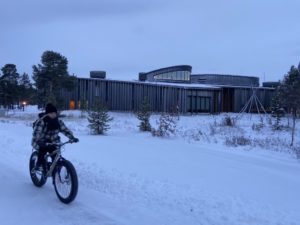by T. Nilsen, Nov 28, 2021 in The BarentsObserver
On the Finnmark plateau, between Kautokeino and Karasjok, temperatures dropped down to -35°C on Sunday. The forecast for the coming week shows a temperature anomaly for the last days of November of 10°C below the reference period 1961-1990, the Swedish Meteorological and Hydrological Institute informs.
Coldest out is Nikkaluokta near Gällivare in Norrbotten with -36°C.
In times of climate change, the current freeze comes in sharp contrast to last fall, when meteorologists reported about the hottest October and early November ever measured, with an average of 6,7°C above normal across the Arctic.
Cold weather even sweeps the coast of northernmost Norway where the Arctic waters are kept ice-free by the warm Gulf Stream. In Kirkenes, on the border to Russia, the thermometer read -25°C on Saturday outside the Barents Observer’s office.
…
On the Kola Peninsula, Sunday November 28 came with temperatures from -18°C to -30°C the news online Severpost reported.
Further east in the Russian Arctic, quickly accumulating sea-ice on the Northern Sea Route has created a critical situation as a number of ships have been trapped in thick sea-ice for several weeks.
…

Inari, northern Finland. Photo: Thomas Nilsen
